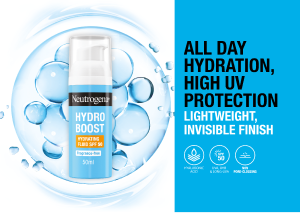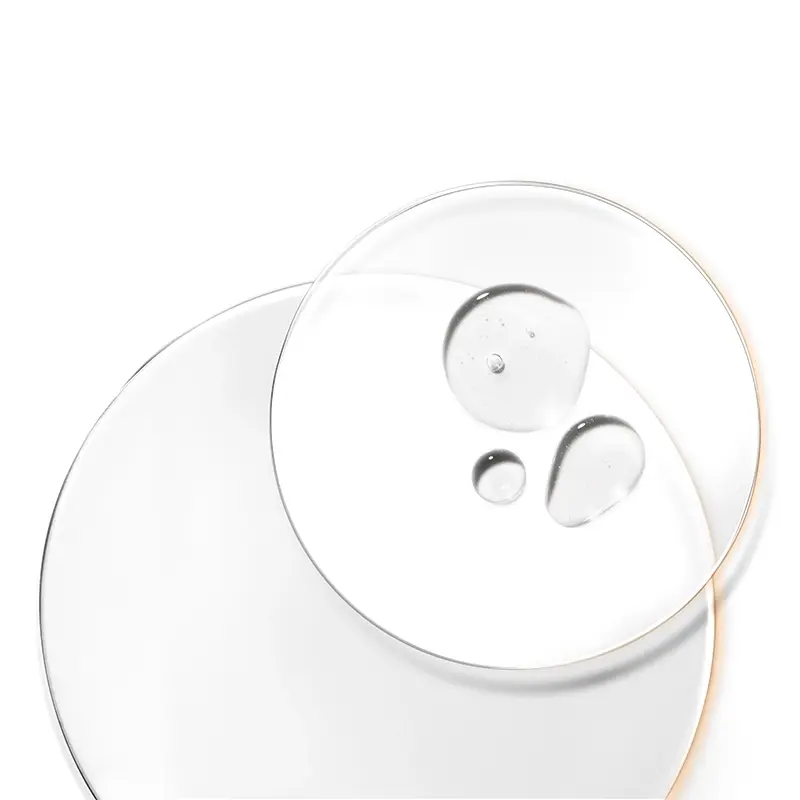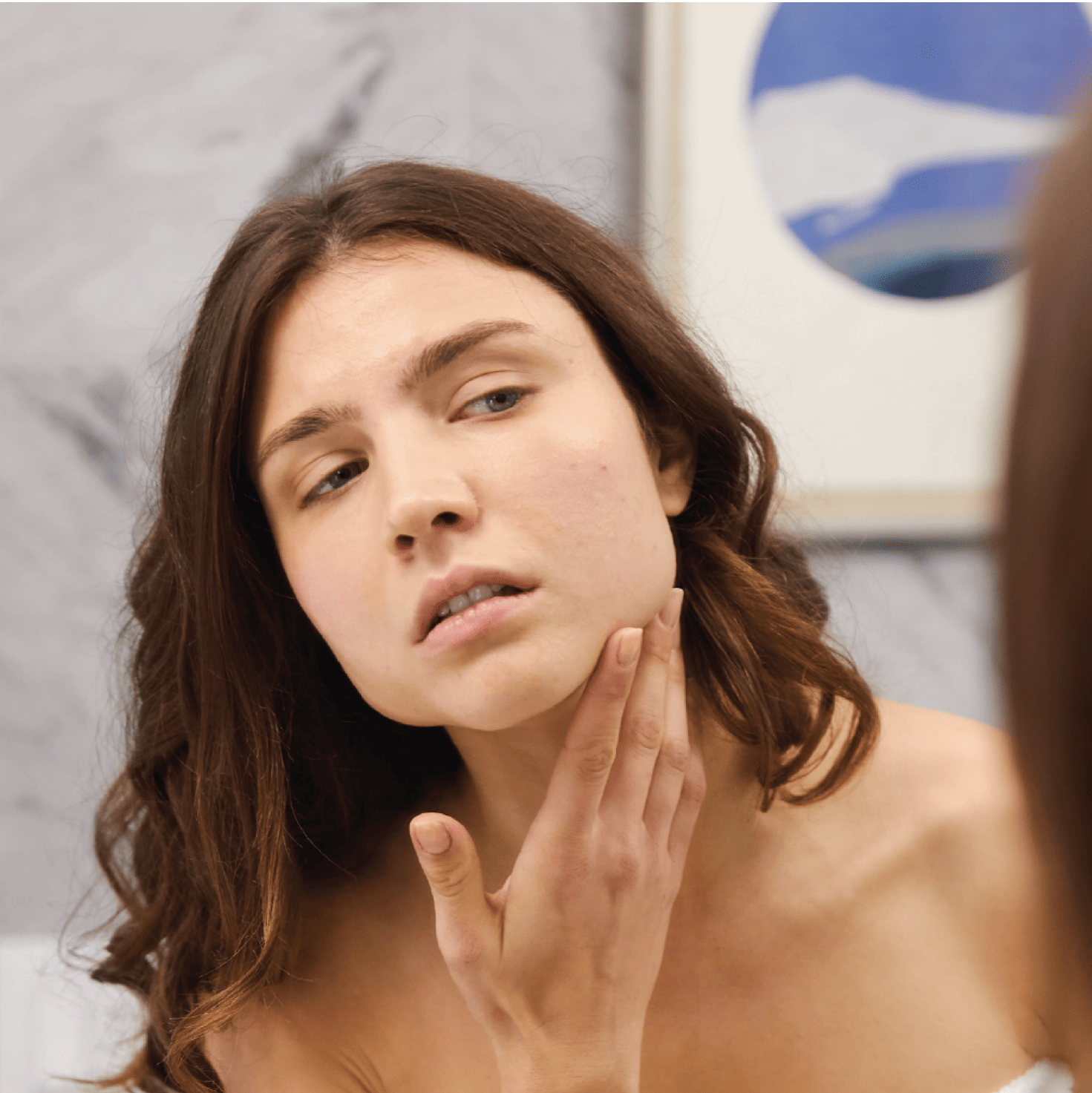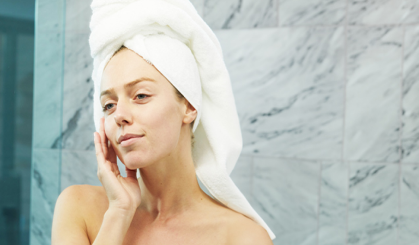Spots are incredibly common. In fact, acne – a spot-related skin condition – will affect most people at some point in their lives. Not only is it common, but there are also many different types of spots that you can get. From blackheads to pustules and cysts, each type can affect different areas at different levels of severity.
Keep in mind that having spots isn’t the same as having acne. While spots and pimples may be a symptom of acne, getting them occasionally doesn’t necessarily mean you have acne itself. Acne is a skin condition that often has different triggers and background causes. Due to this, the condition can be a little trickier to manage and may require a GP diagnosis and prescribed treatment, depending on the severity.
Here, we’ll explore exactly what spots are and what causes acne. We’ll also take a look at some tips and tricks on managing breakouts.
In this guide:
How do spots form?
Spots – often called pimples or zits – are breakouts on the skin which form when the pores (or hair follicles) become clogged with excess sebum (a naturally occurring oil) and dead skin cells. Different types of spots form depending on where and how the pores are blocked and whether they become infected.
There are six main types of spots that anyone can experience, some of which occur during an acne breakout. These include:
Blackheads – these are brown, or black bumps. Their colour is due to the fact that the pore is open to the air, which causes oil inside to oxidise.
Whiteheads – when the blocked pores remain closed to the air, whiteheads appear as white or pale yellow bumps on the skin.
Papules – these sometimes painful spots often appear as small, red bumps on the skin.
Pustules – pustules look a little similar to papules, however, they have a white head. This is often filled with pus.
Nodules – these appear under the surface of the skin as hard bumps and can be painful.
Cysts – cysts are considered the most acute form of acne. They’re often large, filled with pus, and can cause scarring in some cases.
Keep in mind that, although people with acne have spots, having spots doesn’t necessarily mean you have acne. Acne is a more severe, longer-lasting skin condition that can be diagnosed and treated by a pharmacist or GP. There are also different categories of acne severity, which include:
Mild – with mild acne, people often experience blackheads and whiteheads. In some cases, they may break out in pustules or papules too.
Moderate – similar to mild acne, but more widespread and intense.
Severe – people with severe acne may experience a lot of pustules and papules, along with nodules and cysts. These are also likely to be quite big and painful. In some cases, they may leave scarring.
Severe nodulocystic acne – this type of severe acne causes skin to break out into painful nodules and cysts. They may be inflamed and appear red or even purple.
Acne conglobata – another severe type of acne, this appears as clusters of red nodules that sit underneath the skin. They don’t always appear on the face, but more commonly on the torso, arms, neck, and buttocks.
Acne mechanica – this type of acne is a little different, in that it’s often caused by wearing hats, helmets, and face masks. These spots break out as a result of heat and friction on the skin.
What causes acne?
There are many factors that can cause and trigger acne or different types of spots. Acne itself usually occurs when too much sebum is produced, blocking the pores, and then natural (and usually harmless) bacteria gets into the oil-plugged pores and infects them. This can then result in acne breakouts of papules and pustules and, in more severe cases, nodules and cysts.
Spots are a symptom of acne but it’s important to understand the difference. Acne is a more severe, longer-lasting skin condition and can range in severity. Not only this, but the condition can also be influenced by biological factors, such as genetics, race, and sex.
However, there are also a few things that many people believe can cause or trigger acne, which actually aren’t proven to be true. For example, acne is not proven to be caused by:
Poor hygiene
Poor diet
Sexual activity.
Instead, the causes of acne actually include:
Hormonal changes
Things such as puberty, periods, and pregnancy can all contribute to your skin breaking out with spots. This is why teenagers often experience more acne. During puberty, a rise in hormone levels can encourage glands to produce more sebum, resulting in blockages in the pores and spots.
Genetics
It’s believed that genetics can also affect the chances of you getting acne. If either of your parents have, or had, acne, it’s possible that you’re more likely to suffer from it too.
Gender
Hormone level changes in women are thought to lead to adult acne – usually as a result of their menstrual cycle or pregnancy.
Some cosmetic products
Some cosmetic products can clog the pores and lead to spots. Therefore, it’s important to look for products that are labelled as non-comedogenic if you have spot-prone skin.
Certain medications
Some medications can also cause or trigger acne breakouts. These include:
Steroids
Lithium – which is commonly used to treat mental health issues like depression
Some epilepsy drugs.
Frequent pressure on skin
Some types of acne can be caused by heat, friction, and pressure. This means that wearing hats, headbands, backpacks and even safety and sports gear can cause breakouts.
Smoking
Smoking has been proven to encourage acne breakouts. However, this is mostly common in older people.
How to address spots and acne breakouts
If you think you’ve started to develop a mild case of acne, you can speak to your pharmacist to see what they recommend. If your case is more severe, consult your GP. A doctor will be able to examine your skin – most commonly your face, neck, and back – to see what type of acne you’re suffering from and whether you require treatment.
There are also some at-home steps you can take to both help prevent occasional spots and breakouts, but also to help deal with acne.
Keep your face clean
Although it’s important to keep your skin clear, don’t wash affected areas of skin more than twice a day. Frequent washing can irritate the skin and worsen symptoms. Keeping the face clean helps to get rid of that excess oil and dead skin that can clog your pores and cause spots. Remember to be gentle so as not to irritate your skin, and don’t forget to rinse. Warm water and a mild cleanser will do the trick!
Moisturise
If you’re using a medicated product that tackles acne, it may also be drying your skin out8. That’s why it’s always important to moisturise. Try and find moisturisers that are made for your skin type.– for example, dry, oily, or combination skin. It’s also a good idea to check that products have ‘non-comedogenic’ on the label – which means they’re less likely to cause pore blockages which can lead to breakouts.
Keep your hair away from your face
Wash your hair regularly and try to avoid letting your hair fall across your face.
When to see your GP
You should talk to your GP if your breakouts are moderate or severe. If they’re mild, you can consult your pharmacist. If you find over-the-counter treatments haven’t worked, you may need to get a referral to a specialist or be prescribed special medication for your acne treatment. This can include:
Topical retinoids and antibiotics
Antibiotic tablets
Azelaic acid
In some cases, the combined contraceptive pill
Spot breakout FAQs
Why am I getting spots?
There are a few factors that can contribute to you getting spots. For example, a common cause is hormone changes (often caused by puberty, periods, and pregnancy) which may result in a change in the level of sebum production, resulting in a higher chance of pore blockages.
Additionally, the products you use, medications you take, and even your race and gender can all affect whether you get spots or acne.
What causes whiteheads?
Whiteheads are caused when the glands on your skin start to produce too much sebum, which is a naturally occurring oil. This oil, combined with dirt, debris, and dead skin cells, can plug your pores, which can cause the skin to bulge and lead to whiteheads.
What causes blackheads?
Blackheads are caused in a similar way to whiteheads. Excess sebum and dead skin cells can form a plug that fills up the pores. However, rather than bulging to become a whitehead, it opens up the pore to become a blackhead. The darker colour is due to oxidisation of the trapped sebum as it’s exposed to the air.
What causes spots on your face in adults?
Many things can cause spots and acne on adults. Although the condition is often associated with teenagers when they’re going through puberty, the real cause (in this case) is a change in hormone levels. Due to this, things like periods, pregnancy, and medication with testosterone can all cause spots on the face in adults.
You may also find certain cosmetic products and medications are triggering breakouts. Pressure caused by wearing tight headgear and face masks can also cause facial spots.
What causes spots on the chin?
Spots on your chin can be caused by a number of things – from a change in your hormone levels, to the products you’re using on your face. It’s also possible that things like face masks, which cause friction and heat, may be causing these located breakouts.
How does acne start?
For many people, acne is triggered by puberty. This change in hormones can increase the production of a natural oil called sebum. Too much sebum can clog your pores, causing blockages and spot breakouts.









